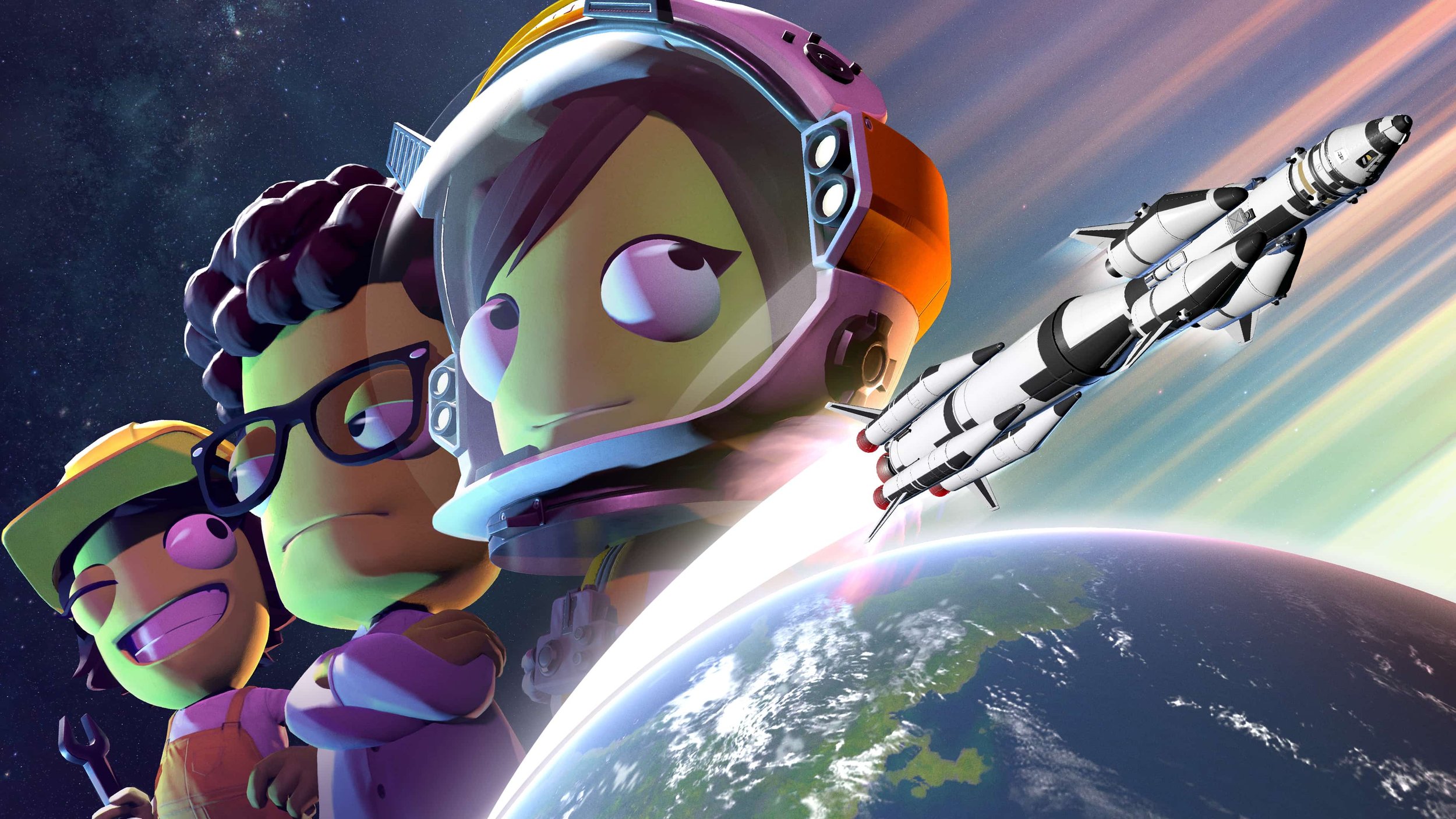
KERBAL SPACE
PROGRAM 2
Flight Cluster
I.C.
UX_Dsgn.
Art_Dir.
UI_Dsgn.
ROLES:
PRODUCT OVERVIEW
////////////Kerbal Space Program (KSP) is a Spaceflight Simulation Game.
The game challenges players to design, build, and pilot their vessels in a physics-based universe. KSP-1, launched by Squad in 2011, has gained a loyal following due to its entertaining yet educational gameplay that combines Science, Technology, Engineering, and Mathematics (STEM).
KSP-2 Goals
While KSP-2 builds upon the beloved features of its predecessor, its key goal is to dramatically expand its audience. This involves making the complex world of space flight simulation more approachable to new players while still providing depth for experienced enthusiasts.
Flight Cluster Focus
The flight cluster, a crucial part of the Kerbal Space Program gameplay, delivers essential information to pilot spacecraft. However, studies from KSP-1 have indicated that new players find the cluster intimidating due to its dense and technical jargon. This highlights the need for a re-evaluation and redesign, which leads us to the next section discussing the flight cluster in more detail.
RESEARCH & IDENTIFY
KSP-1’s Flight Cluster Challenges
////////////KSP-1's flight cluster, while a powerful tool, presented accessibility challenges for new players.
Key findings from our research include:
Information Overload: The sheer density of data and jargon on the flight cluster created a sense of overwhelm for new players, hindering their understanding of core flight mechanics.
Prioritization Issues: It wasn't immediately clear which flight metrics were crucial for moment-to-moment piloting decisions, leading to confusion and potential errors.
Discoverability: The cluster's valuable interactive elements were easily overlooked, reducing engagement and limiting players' ability to utilize the tool fully.
Auditing & Mapping
Player experience analysis, including journey mapping and empathy mapping, revealed the following pain points associated with KSP-1's flight cluster:
Cognitive Strain: New players struggled to identify the most relevant information amid the visual density, which impacted their decision-making during critical piloting phases.
Unclear Affordances: The lack of visual cues or onboarding left some interactive elements underutilized or, worse, completely undiscovered.
Missed Opportunities: The potential for a more intuitive and engaging flight cluster experience was hampered, limiting player satisfaction and potentially increasing the drop-off rate.
DEFINE & DESIGN
KSP-2 Flight Cluster Redesign
////////////To overcome the challenges identified in KSP-1's flight cluster, our redesign focuses on clarity, intuitive hierarchy, and enhanced discoverability.
Key strategies include:
Prioritizing Critical Data: The most essential flight metrics (altitude, velocity, orientation) are prominently displayed, giving new players a clear focal point while allowing access to advanced telemetry when needed.
Logical Grouping: Related information is clustered together, reducing the need for players to scan the entire display and promoting an intuitive understanding of how different metrics relate.
Affordance Through Design: Interactive elements are visually distinct and provide feedback on hover or interaction (e.g., highlighting, tooltip explanations) to improve discoverability.
Mapping & Visual Cues
[[IMG]] KSP1 -> KSP2 Flight Cluster, ~2023
Side-by-side comparison highlights improved organization and visual clarity in the KSP-2 flight cluster.
We used affinity mapping to grasp player needs during various flight scenarios such as takeoff, orbit, and landing. Coupled with community feedback, this guided us in determining the data presentation and emphasis at different stages.
[[IMG]] KSP2 / Flight Cluster, ~2023
In KSP-2, related data like altitude, vertical speed, and atmospheric pressure are grouped to improve navigation and decision-making during critical flight phases
Kerbal Space Program 2
makes rocket science
far more approachable,
but no less complex.
“
”
////////////Credits
Studios
Star Theory → Intercept Games
Timeline
Sep 2017 and Dec 2019
Launched
Early Access Feb 2023
Creative Director
Nate Simpson
Senior UX/UI Designer
Levin Sadsad











